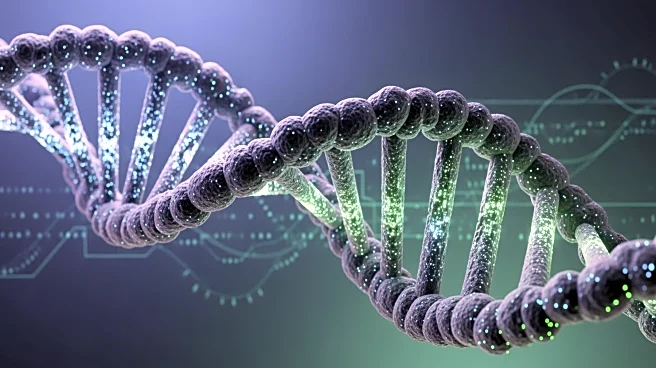What's Happening?
Recent research published in the Proceedings of the National Academy of Sciences has revealed that Tibetan women living in high-altitude regions of Nepal have developed genetic adaptations that significantly
enhance their reproductive success. These adaptations are linked to specific genes, such as EPAS1 and EGLN1, which regulate hemoglobin levels and improve oxygen efficiency under low oxygen conditions. The study involved 417 ethnic Tibetan women, aged 46 to 86, residing in villages at altitudes between 3,600 and 4,200 meters. The findings showed that women with intermediate hemoglobin concentrations and high oxygen saturation had the highest number of live births, averaging 5.2 children per woman. These genetic traits, believed to have originated from Denisovans, an extinct hominin species, provide a powerful evolutionary advantage by enhancing oxygen delivery without increasing hemoglobin to dangerous levels.
Why It's Important?
The study's findings offer critical insights into human evolution as a present-tense process, demonstrating how populations adapt to extreme environments. The genetic adaptations observed in Tibetan women not only improve reproductive success but also provide a model for understanding potential future human adaptations to similar conditions. This research highlights the role of natural selection in shaping the human genome and offers a lens for studying evolutionary processes in real-time. The implications extend beyond the Tibetan population, as they provide a framework for exploring how other high-altitude populations, such as those in the Andes, have evolved different biological responses to similar environmental pressures.
What's Next?
The research opens avenues for further studies on genetic adaptations in other high-altitude populations and their potential applications in medical and evolutionary biology. Understanding these adaptations could lead to advancements in treating conditions related to oxygen deficiency and inform strategies for human adaptation to extreme environments, such as space exploration. Additionally, the study may prompt further investigation into the genetic contributions of extinct hominin species, like Denisovans, to modern human populations.
Beyond the Headlines
The study underscores the complexity of human adaptation and the diverse evolutionary paths taken by different populations facing similar environmental challenges. It highlights the concept of convergent evolution, where distinct populations develop different biological solutions to the same stressor. This research also raises ethical considerations regarding the use of genetic information and its implications for understanding human diversity and evolution.











